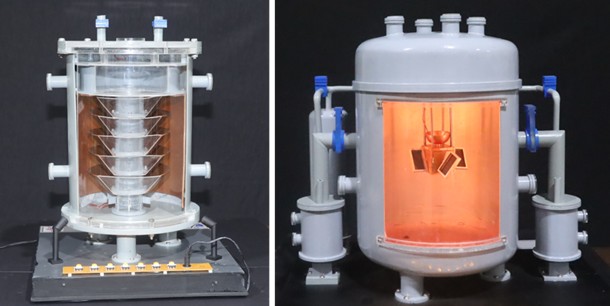Cryo Pump
Cryo pump
Gas pressure is caused by the collision of gas molecules on the walls of the container. So, lesser the number of molecules, lower will be the pressure. In a normal mechanical vacuum pump, the air from a container is physically removed by using high speed rotors. A cryogenic pump can work at very low temperatures (-196oC, Liquid Nitrogen temperature) where mechanical/moving parts cannot be used (as they would freeze and stop moving). In a cryo-pump, there are no moving parts and the gas molecules from the volume being pumped are trapped below their freezing point on adsorbing surfaces (activated charcoal), thereby reducing the pressure in the volume.
Cryo pumps are used to evacuate large volumes and where temperatures can go below -150oC. Such a setup is where satellites bound for outer space are rigorously tested for thermal cycling as the satellites will experience temperatures ranging from less than -150oC to more than +120 oC while in space depending on whether the satellite surface is facing the sun or away.
This cryopump developed by IPR is named "AGASTYA" which essentially stands for A GAS Trapping YAntra.
 (L) Cut-out scale model of the AGASTYA cryo pump (R) Application of cryo pump showing the facility for thermal cycling testing of satellites. Vacuum in the large volume required for testing the satellite in vacuum is produced using cryo pumps.
|
© IPR, 2017-18
Home Academic Visits | IPR Outreach | Comic Book | Exhibition Hall | Plasma Exhibition | People | Resource Materials | NSD-2025 | Social Outreach | Solar Telescope | Training Program | TokoToy | Vigyan Samagam | 2022 Events | 2023 Events | 2024 Events | 2025 Events | Upcoming Events | FAQ FAQ | Contact Contact | Ask A Question Ask A Question | Talk 2 Us Interact with a Plasma Scientist |
